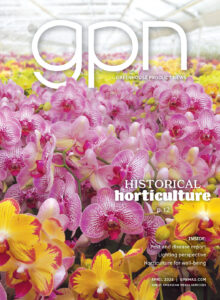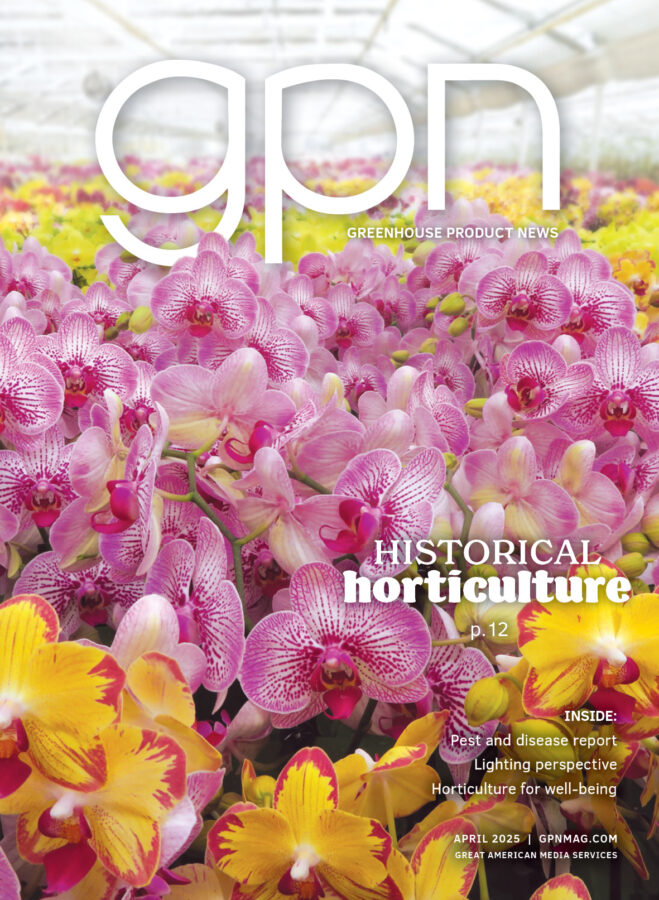
Forty Under 40 Perspectives: Oils, myth & magic
Horticultural mineral oils (HMO) have been on the market for over 100 years. Early oil formulations were heavy and contained volatiles that were often phytotoxic. Over time, the quality of oil products has improved significantly, with an increase in the range of plants that can be treated, as well as the range of arthropods and diseases that can be controlled simultaneously. In addition to arthropod suffocation and cuticle disruption, certain oils can elicit behavioral effects such as repellency, antifeedant and anti-oviposition properties. This can be especially true for products containing essential oil(s). Oils have many beneficial properties: safety for workers, limited side effects on natural enemies (no harmful residues), efficacy on par with chemical pesticides, utility as carriers or adjuvants, and no resistance concerns.
When considering HMOs, be aware of information on the label. First, oil concentration can vary from product to product. Typically, products contain 80 to 98% mineral oil. UltraPure Oil is an example of a 98% oil, and SuffOil-X is an example of an 80% oil. Does a lower oil concentration mean lower efficacy? In the case of SuffOil-X, the oil in the formulation has been homogenized, or broken down to where the oil droplets are extremely small, creating an oil-water emulsion. This creates several advantages; first, the oil behaves more like a chemical and will readily go into suspension. The small droplets remain in suspension longer and do not separate (agitation is still necessary). Second, applying less oil to the plant reduces the risk of phytotoxicity; however, due to the formulation and oil droplet size, the same level of disease and/or arthropod control is still achieved. Finally, once applied, the oil will coat and penetrate tiny arthropod spiracles but will not clog plant stomata or inhibit the plants’ ability to transpire.
Another important item on the label is the unsulfonated residue (UR) percentage. This number is typically listed immediately below the oil concentration. The UR value is a measure of the degree of refinement of an oil and an indication of the phytotoxic materials that remain after the distillation and refining process. An oil with a high UR (≥ 92%) is free of most impurities and is a good measure of overall quality. Oils with UR of <92% are potentially more phytotoxic on plants. Myth: UR does not correlate to the amount of sulfur the product contains.
MINIMUM RISK PESTICIDES
FIFRA 25(b) exempt oil-based products, on the other hand, contain active and inert ingredients that are considered minimum risk and are registered under Section 25(b) of the Federal Insecticide, Fungicide and Rodenticide Act (FIFRA). Products with 25(b) exemption do not need EPA registration and are exempt from regulations on efficacy and toxicity; however, they still need to be registered for use in each state.
The mode of action (MOA) of 25(b) products is related to the type(s) of formulated essential oil(s). MOA may include suffocation, cuticle disruption, repellency, antifeedant, anti-oviposition, etc., but some essential oils can also increase pest movement, disrupt the nervous system, cause disruption of receptors regulating cell function and/or create physiological changes that result in pest mortality. As efficacy data are not required to commercialize a 25(b) product, access to new data can be limited. Reputable companies, however, do generate quality data to support their 25(b) products and make this information available to their customers.
Benefits of using 25(b) products include great safety profiles due to minimum risk ingredients, little to no residue, exemption from food tolerance requirement (no maximum residue limits), fewer personal protective equipment requirements, no restricted entry interval (REI) or preharvest intervals, good tank mix partners, excellent resistance management tools, and high efficacy against target pests. Disadvantages include possible crop tolerance, limited residual activity, volatility creating fragrance, availability due to supply challenges and cost.
Regardless of the oil product chosen, there are application considerations. It is important to make sure the plant is dry within two hours after an application. The longer a plant is wet, the more likely the oil will start to degrade the waxy cuticle of the leaf and cause phytotoxicity. Applications should be made when relative humidity is less than 85%. Additionally, ambient temperatures should be below 90° F with applications ideally in the morning or afternoon.
Now that we have all the information on the types of oils, how do you choose? What is best for your operation and situation? It doesn’t have to be either/or; have both HMOs and 25(b)s on hand and use them in rotation. Choose which product(s) to use based on the pest and the current circumstance. For instance, use HMOs when you can observe the REI and 25(b) when you need earlier access to the treated greenhouse, and 25(b) products can offer the flexibility in treatment timing you have been missing.
For an enhanced reading experience, view this article in our digital edition by clicking here.









 Video Library
Video Library 


















